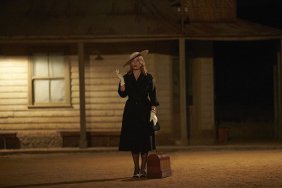The industries of fashion and film share an unshakable bond. With the announcement of official nominations for the 81st Academy Awards, the fashion world became abuzz with concerns and speculations over who and what the honored actors and actresses will be wearing to the ceremony. However, devoted followers of both fashion and film will find that the films themselves are also of interest, especially since this year’s nominees for Excellence in Costume Design include a particularly rich collection of sartorial talent.
The delicate laced bodices and richly embroidered muslin hoop-skirts from The Duchess are a clear favorite. This is especially fitting considering the fact that the Duchess of Devonshire herself was the preeminent trendsetter and style icon of her day.

Georgiana had a vast budget and some of Europe’s most celebrated dressmakers at her disposal, and whatever she was seen wearing was sure to spawn an overnight frenzy as the ladies of London rushed to replicate her outfits. She was attributed as the source of countless trends including elaborate picture-hats, the trademark buff and beige of the Whig party, and the military coat, which has recently seen a modern revival on the Fashion Week runways.

To recreate Georgiana’s regal looks, Michael O’Connor, who also designed costumes for Miss Pettigrew Lives for a Day and worked as an assistant on Quills and Harry Potter and the Chamber of Secrets, did meticulous research on Regency fashions and Georgiana’s own wardrobe. The result was a set of truly authentic looking historical pieces, flawlessly recreated right down to the seamless hand-stitched waistcoats and laced engageatantes and the signature buff and beige ensembles Georgiana wore in support of her beloved Whig party.
However, despite the Academy’s palpable preference for period costumes, it is arguably more difficult to create convincingly genuine costumes for more recent times.

The other four nominees in this category are Catherine Martin for Australia, Jacqueline West for The Curious Case of Benjamin Button, Danny Glicker for Milk and Albert Wolsky for Revolutionary Road, all of which are set in the 20th century. Australia, another leading contender for the Oscar, reportedly included a wardrobe of over 1,800 costumes (quite appropriate for the sweeping epic romance) and featured dreamy Asian-inspired 1930s dresses worn to perfection by Nicole Kidman as the aristocratic Lady Sarah Ashley.

Martin, who had previously won for her work on Moulin Rouge, looked to the original sketches of Coco Chanel and Cristobal Balenciaga to create everyday looks such as fitted cardigans, ruffled collars, and naval-inspired blue jacket.
In Benjamin Button, a film which spans eighty-six years, two continents, and a variety of socioeconomic classes, costume designer Jacqueline West faced the additional challenges of showing the aesthetic progression and evolution of trends and styles.

West not only rises to the occasion but also gives us an iconic look for the ages – an exquisite tea-length red dress with a full skirt and a graceful open neckline.

Wolsky had a rich tapestry to draw upon for Revolutionary Road. This was a time of haute couture revival, when waists were emphasized and dresses were ultra-feminine whether they had a fitted or full skirt.

The clothing needed to capture the mood of natural and effortless 1950’s glamour while also keeping with the film’s comfortably suburban but morose tone. The costumes were subtle but very fashion conscious, from fedoras and high-waisted trousers to casual silk blouses and Dior’s “New Look” silhouettes.

In Milk, Danny Glicker captured the look of 1970’s San Francisco culture to the extent that scenes from the film melded seamlessly with actual documentary footage. It is also to Glicker’s credit that while the clothes perfectly captured the spirit of the decade, the characters emerged as distinct identities, each with their own unique style.

Fashion in each decade has always been intrinsically linked to the socioeconomic climate of the time, and the lowering or raising of a hemline by mere inches often signals political upheaval or economic prosperity. Therefore, costume designers have an enormous responsibility to both research and innovate, especially when their creations have the ability to determine a film’s critical reception and box office success. The five nominees in this category represent the year’s greatest achievements in the arena of cutting, sewing, tailoring, and draping to create the convincing illusion of revisiting decades past, and no matter who takes home the golden statuette on February 22nd, movie buffs and fashion lovers alike can sleep easy with the assurance that the art of costume design is alive and thriving.
Images courtesy of the Fashion Spot forums.






